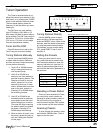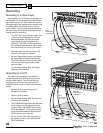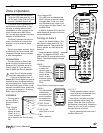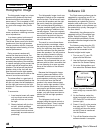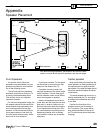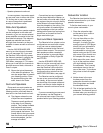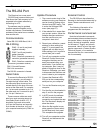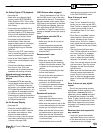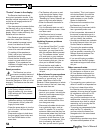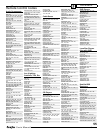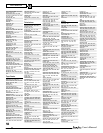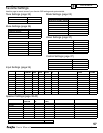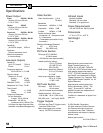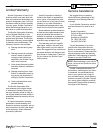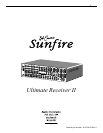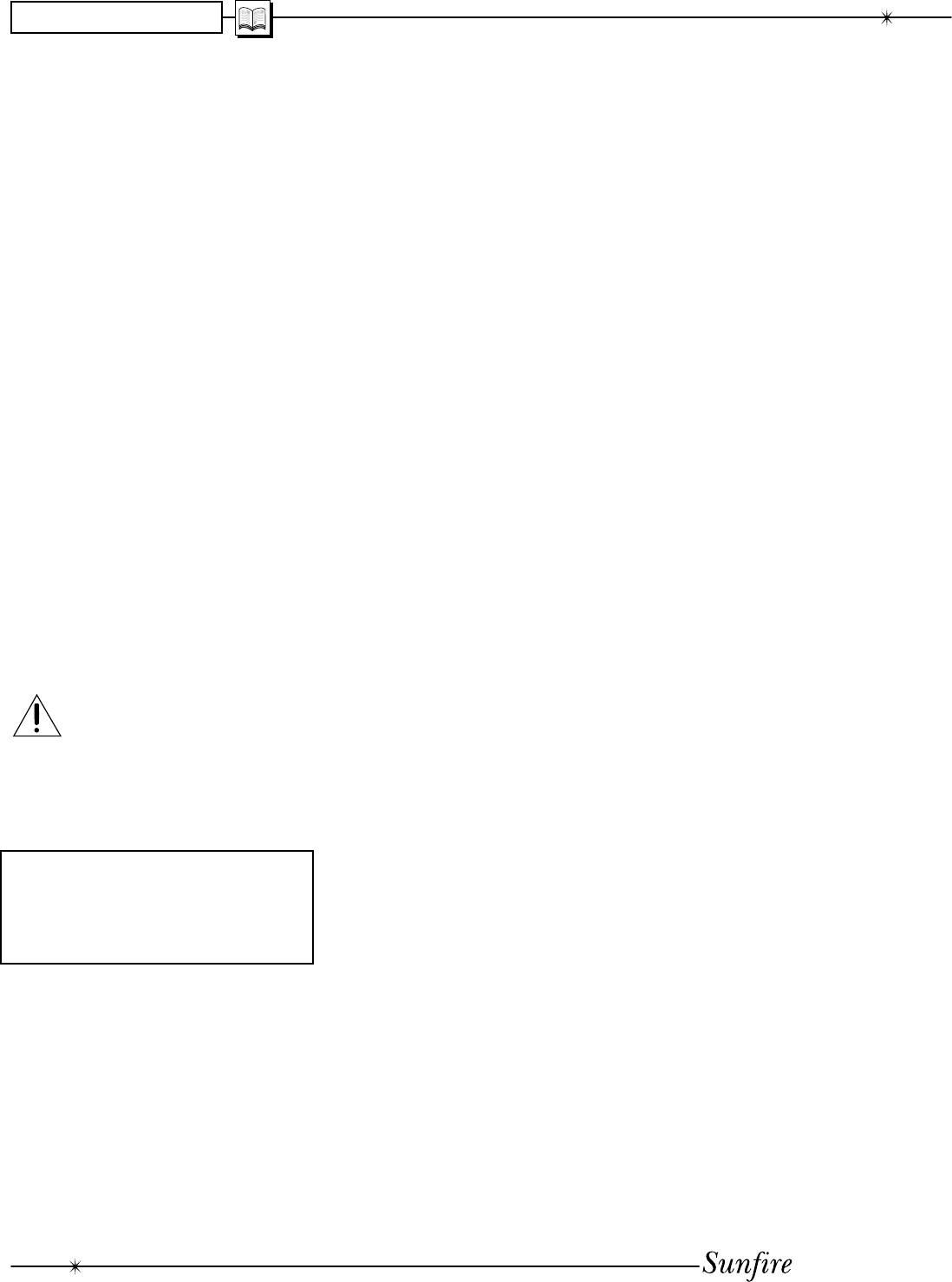
User's Manual
54
APPENDIX
"Protect" shows in the display
The Receiver has thermal and
short-circuit protection circuits. If the
ampliÞ er internal temperature is high,
a quiet fan will engage and start to
cool things down.
If the temperature increases further,
the Receiver will go into a standby
mode and "Protect" will appear in the
display. When it cools sufÞ ciently, the
Receiver will turn back on.
If the Receiver goes into protect
mode often, check the following:
• Each speaker's average imped-
ance is not less than 4 ohms.
• The Receiver has good ventilation,
none of its vents are covered.
• Try setting all the speakers to
Small, and let your subwoofers
handle the heavy bass.
• Check that the ampliÞ er power
output is a good match for your
speakers. If your speakers are
inefÞ cient, consider using an exter-
nal power ampliÞ er.
Reset procedure
The Receiver is a micro-
processor controlled device of
great complexity. Occasional
power ß uctuations and spikes may
cause the Receiver to "lock up" or act
strangely. The Receiver can be reset
as follows.
Warning: the Receiver will be reset
to the factory defaults, and will
clear all memory. All your stored
OSD settings and Tuner presets
will be erased.
• On page 57, write down your
calibration settings, input settings,
Tuner presets, and any other set-
tings you have made.
• Press the power button to turn the
unit off, or turn it off from the wall
for a moment.
• Press and continue to hold down
the front panel Power button and
the Tone DOWN button at the
same time.
• The Receiver will power on and
cycle through the display. Keep
holding the buttons down until
"Resetting to Factory Defaults" ap-
pears in the front panel display
• When the Receiver has been re-
set, it will shut off.
• Turn the Receiver back on and it
will go to the default screen. It has
now been reset.
• If the Receiver has to be reset
regularly, you should invest in a
good quality AC line conditioner.
Updating Þ rmware problems
• See page 51
• If you have a Palm Pilot™ or simi-
lar device with “HotSync™” or its
equivalent, you may need to dis-
able this software before proceed-
ing. This software ‘seizes’ control
of a serial port on your machine
and prevents the SunÞ re software
from accessing that port. Use an-
other port or disable HotSync.
• Check that the serial cable is
connected correctly between the
Receiver and your computer's se-
rial port.
A Hum is heard in your speak ers
This problem is more than likely
caused by a “ground loop” in your
system, rather than a fault in the
Receiver. Follow these steps to isolate
the main cause of the hum, there may
even be more than one.
• Remember to turn off all compo-
nents in your system, including the
Receiver, before disconnecting or
con nect ing any cables.
• Disconnect the following items in
order, and check each time if the
hum has gone away:
• Disconnect all cables which come
from outside the room, such as
cable TV, satellite TV, or roof top
antennas. Make sure that they are
dis con nect ed where they Þ rst enter
the room, so they are making no
con nec tion to the Receiver or the
TV, or any other component. If the
hum is caused by the cable TV
line, then you will need a “ground
loop iso la tor.” This is an inexpen-
sive device Þ tted in line with the
coaxial cable feed. Con tact your
ca ble com pa ny or your Sun Þ re
Dealer for as sis tance.
• Disconnect all connections from
the Receiver to your TV.
• Disconnect any component which
has a grounded power cord.
• If the hum persists, disconnect all
the source com po nents one at a
time from the back of the Receiver,
until you identify the prob lem.
• Ground loop isolators are available
for audio lines and video. Ask your
SunÞ re Dealer for assistance.
• Try moving the speaker cables
away from any power cords. Try
just one speaker, connecting it to
different channels and see if an
ampliÞ er channel is bad.
• If you are still having a problem,
remember that SunÞ re’s dealers
and technical support staff will as-
sist you.
Other causes of noise
• Speaker noise may also be caused
by in ter fer ence or noise on your
AC line. Make sure there are no
large ap pli anc es sharing the line,
or halogen lamps or light-dimming
Triac devices.
• Try connecting your system to an-
other AC socket on a sep a rate line.
• If the hum is heard from within
the Receiver and not through the
speak ers, this may also be caused
by in ter fer ence on the AC or DC
lines. The power trans form ers
may turn this interference into an
audible noise. Internal hum can be
made worse by a shelf or cabinet
resonating, so try moving the Re-
ceiver to another shelf.
• Try moving your components further
away from the TV, es pe cial ly if
you ever notice the screen has
changed color in the area closest
to the component.
• High efÞ ciency speak ers may show
up noises other speakers do not.



